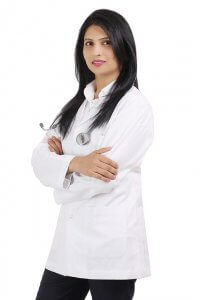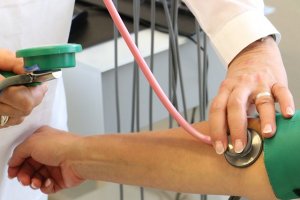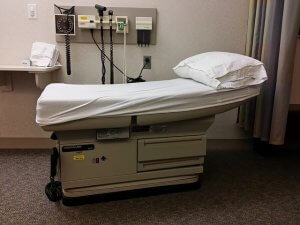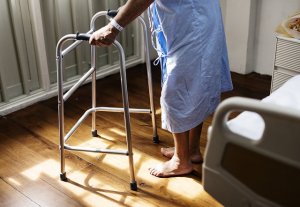If you are currently in the Match, you’re probably finished or about finished with your interviews with potential residency program directors, and it’s time to finish your rank order list (ROL).
What is a Rank Order List?
 A ROL is a list created in the National Resident Matching Program (NRMP)’s registration system. The list is intended to allow you to rank the programs in which you’d like to attend. It also gives residency program directors a chance to rank their applicants in the order of preference of whom they’d like to train. The idea is that residency programs and applicants are matched based on who will be a best fit.
A ROL is a list created in the National Resident Matching Program (NRMP)’s registration system. The list is intended to allow you to rank the programs in which you’d like to attend. It also gives residency program directors a chance to rank their applicants in the order of preference of whom they’d like to train. The idea is that residency programs and applicants are matched based on who will be a best fit.
Tips on Ranking
 There are varying opinions on whether or not you should flood your ROL with as many residency choices as possible. You can rank 100 programs without any additional fees and up to 300 with additional fees (up to $30 per program). As an International Medical Graduate (IMG), it is true that you are at a disadvantage statistically speaking, so it may be worth it to include more choices on your list. However, you also want to be thoughtful in your choices. Your residency is a huge step in your career path, and you want it to be the right step. Here are some tips:
There are varying opinions on whether or not you should flood your ROL with as many residency choices as possible. You can rank 100 programs without any additional fees and up to 300 with additional fees (up to $30 per program). As an International Medical Graduate (IMG), it is true that you are at a disadvantage statistically speaking, so it may be worth it to include more choices on your list. However, you also want to be thoughtful in your choices. Your residency is a huge step in your career path, and you want it to be the right step. Here are some tips:
- First, make a list of all residency programs you are willing to attend. Don’t exclude programs you aren’t sure about. Put them all on there. You’ll prioritize later.
- Don’t choose programs simply because you feel the program director will choose you based on interactions or letters received. In addition, if you are pretty sure you will place in the residency of your dreams, DON’T SHORTEN YOUR RANK LIST. You don’t want to miss out on an opportunity if your “promised” residency doesn’t pan out.
- Consider competitiveness. It is great to get into a highly competitive program, but consider your chances, and make sure you rank a combination of competitive and less-competitive programs to increase your chances of a Match.
- Don’t wait until the last minute, as you risk servers shutting down due to too many users. Instead, add your rankings early, and know that you won’t run into technical difficulty.
- Other things to consider when ranking:
- Program quality: Who are the attendings? How successful are the graduates? How does the hospital rank? What is the philosophy of the residency/program director? Make sure you understand the program for which you are applying.
- Research opportunities: The availability of research opportunities is very important if you are expecting to enter a medical profession where you engage in your own research projects. Entering a residency with research opportunities gives you a head start.
- Success of residents: Find out if graduates from this residency program are successful in their futures. Whether the measurement of success is fellowship placement or overall happiness, finding out about graduates can be a huge indicator of your future should you Match with that program.
- Relocation: You may have to move to enter a residency program, but are you okay with the location? Could you see yourself moving there for an extended period of time beyond residency? This is something worth considering.
Considering multiple factors regarding residency programs will help you to appropriately rank them. You should rank them in order of preference based on these factors but also rank them based on a good mix of competitive and less-competitive programs along with programs that tend to be IMG-friendly.
Certification of Your ROL by Feb. 26
By February 26th, you must have your Rank Order List certified in NRMP’s system. Once it is certified, you can still make changes until 9 p.m. EST on that date.
What if You Didn’t Match?
If you didn’t get any interviews, then you didn’t have a chance to submit a ROL. If you didn’t Match, then you may also be wondering what to do. There is a Supplemental Offer and Acceptance Program (SOAP) that allows candidates to apply for programs that have unfilled positions.
Overall Message in Regard to Rank Order Lists
Ultimately, you should not rank a residency that you do not want to be a part of. At a certain point, it defeats the purpose of your entire medical journey. Instead, be open to opportunities, and rank according to your preference. There are some tactics that may help to get you placed (i.e. IMG-friendly, competitive mix), but you don’t want to simply take an option because you can or limit your options because you think one program is a sure thing. Instead, a well-thought approach to ranking programs should be used.
Have your advisor look at your list if you have any concerns, and make sure you aren’t forgetting about any opportunities. Your rank order list is confidential (except for NRMP staff), and residency program directors will not see it, but it doesn’t hurt to get a little extra input.
 Standing and sitting with good posture also reflects confidence. Cowering in the face of judgement in front of interviewers shows that you are not confident in your skills, and you must exude confidence in your posture both in front of your interviewers in your patients. Practice holding your head up high, and make it a habit to hold your shoulders back. It will become natural, and you won’t feel odd doing it during your interview.
Standing and sitting with good posture also reflects confidence. Cowering in the face of judgement in front of interviewers shows that you are not confident in your skills, and you must exude confidence in your posture both in front of your interviewers in your patients. Practice holding your head up high, and make it a habit to hold your shoulders back. It will become natural, and you won’t feel odd doing it during your interview. In America, everyone appreciates a firm handshake. This doesn’t mean it is a power struggle between you and the recipient. Rather, a limp handshake feels wrong and weird. Too strong of a handshake feels like you are insecure. Firmness should be warm and indicative of your earnestness.
In America, everyone appreciates a firm handshake. This doesn’t mean it is a power struggle between you and the recipient. Rather, a limp handshake feels wrong and weird. Too strong of a handshake feels like you are insecure. Firmness should be warm and indicative of your earnestness.

 There are multiple ways to waive the two-year home country requirement. The government of the home country can release a no objection statement (NOS). The requirement can also be waived if it would cause exceptional hardship to a U.S. citizen or legal resident. If the person would be persecuted in his or her home country, it may be waived. The U.S. government can also waive the visa requirement if it would harm the intent of the person’s project or agency’s interest. Lastly, the Conrad 30 waiver program allows physicians to stay if they will fulfill the needs of the American healthcare system in rural or underserved areas.
There are multiple ways to waive the two-year home country requirement. The government of the home country can release a no objection statement (NOS). The requirement can also be waived if it would cause exceptional hardship to a U.S. citizen or legal resident. If the person would be persecuted in his or her home country, it may be waived. The U.S. government can also waive the visa requirement if it would harm the intent of the person’s project or agency’s interest. Lastly, the Conrad 30 waiver program allows physicians to stay if they will fulfill the needs of the American healthcare system in rural or underserved areas. The American Academy of Medical Colleges predicts a shortage of 122,000 doctors by 2032. Demand for medical care is exceeding supply, which could result in catastrophic delays in care and negative health outcomes. Because the population is living longer, the number of patients needing care is growing. By 2032, the number of people living over age 65 is expected to increase by 48 percent. Additionally, elderly populations often have co-morbidities that require multi-disciplinary teams. On the one hand, people living longer is a great thing. However, they still need medical care. The doctors are also aging. According to the
The American Academy of Medical Colleges predicts a shortage of 122,000 doctors by 2032. Demand for medical care is exceeding supply, which could result in catastrophic delays in care and negative health outcomes. Because the population is living longer, the number of patients needing care is growing. By 2032, the number of people living over age 65 is expected to increase by 48 percent. Additionally, elderly populations often have co-morbidities that require multi-disciplinary teams. On the one hand, people living longer is a great thing. However, they still need medical care. The doctors are also aging. According to the  Go out for coffee
Go out for coffee








 An August 2019
An August 2019  Geriatric medical practice comes with its own set of challenges, and the elderly may have multiple morbidities that require complex treatment in an environment of poor understanding and compliance. However, not every elderly person has the same level of ailments, and those in the community may function as well as young adults. In either case, it is important to have compassion for those suffering from cognitive decline while also acknowledging that age does not automatically equate to cognitive decline. One of the very apparent results of this is under-treatment of geriatric patients because of an acceptance that their decline is inescapable.
Geriatric medical practice comes with its own set of challenges, and the elderly may have multiple morbidities that require complex treatment in an environment of poor understanding and compliance. However, not every elderly person has the same level of ailments, and those in the community may function as well as young adults. In either case, it is important to have compassion for those suffering from cognitive decline while also acknowledging that age does not automatically equate to cognitive decline. One of the very apparent results of this is under-treatment of geriatric patients because of an acceptance that their decline is inescapable.